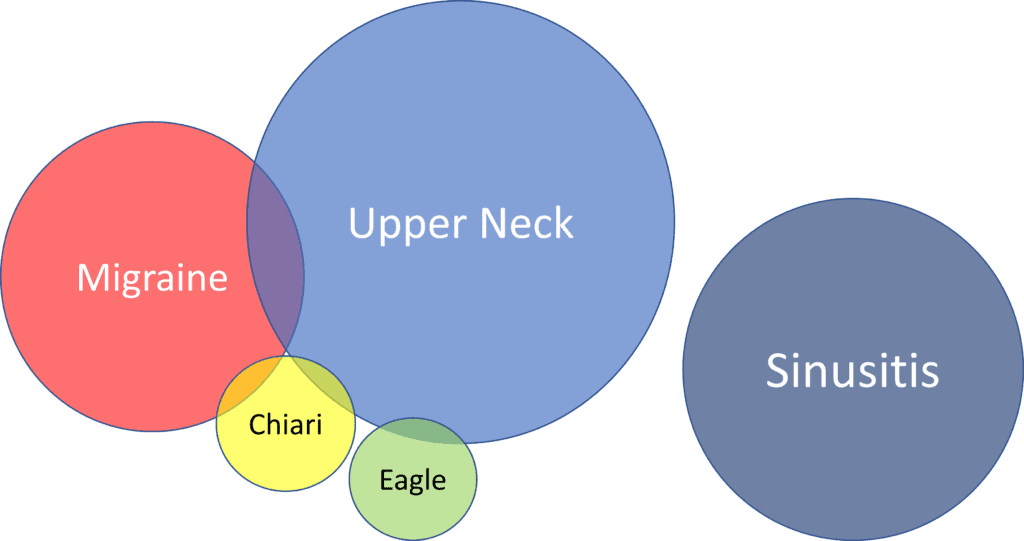Headaches, Blind Men, and an Elephant

Credit: Shutterstock
Headaches are one of the most confusing problems for patients searching for solutions. Like the elephant and the blind men in the famous parable, each medical specialty seems to have a completely different way of conceptualizing this problem. Let’s dig in.
Blind Men and an Elephant

Credit: Shutterstock
This is the parable from Wikipedia:
“The parable of the blind men and an elephant originated in the ancient Indian subcontinent, from where it has been widely diffused. It is a story of a group of blind men who have never come across an elephant before and who learn and imagine what the elephant is like by touching it. Each blind man feels a different part of the elephant’s body, but only one part, such as the side or the tusk. They then describe the elephant based on their limited experience and their descriptions of the elephant are different from each other.”
If you’re a patient, this is what you’ve experienced with headaches. Each specialist you see has a different take on what’s causing your headaches. For example, let’s review this by medical specialty:
- Neurology – Headaches are largely vascular events in the brain that are called Migraines. Medication focused on the treatment of this vascular event and lifestyle modification is the primary way headaches should be treated. Headaches can sometimes be caused by the occipital nerves.
- Interventional Pain Management – Headaches are most often caused by the upper neck facet joints and associated nerves (including the occipital nerves). If the doctor can find which structure is causing the pain through a diagnostic block (numbing injection) the problem can be treated.
- Pain Medicine – Headaches are a pain problem and hence pain medications are needed. This can include anything from low-dose naltrexone to narcotics to non-narcotic pain medication.
- Neurosurgery – Headaches can be caused by upper neck instability or the brain hanging too low in the skull (Chiari malformation). Hence, if these symptoms are disabling and not helped by other measures, then either upper neck fusion or skull base decompression is needed.
- ENT – Headaches can be caused by sinusitis. If so, then antibiotics or surgery may be needed. Another cause of headaches could be an elongated styloid process known as Eagle syndrome. If this is the case, the treatment is cutting the elongated process in a procedure known as styloidectomy.
There are lots of other causes as well, such as dural leaks, but we’re focusing on the most common things. Who’s right? Let’s dig in.
Headache Causes

So let’s look at what I see every day as my patients walk in with headaches.
- The single biggest cause in my patients is the upper neck. The problem here is that you need to perform a hands-on physical exam where you press on specific upper neck joints and nerves to see if they’re causing pain. Given that this type of exam is a lost art, most patients who see a neurologist or other provider never get this type of exam. In addition, to test this theory, you need to know how to perform precise x-ray and ultrasound-guided numbing injections into these areas, which is again, not something your average neurologist has the training to perform. Hence, many patients with upper neck issues get misdiagnosed as having Migraines.
- Sinusitis is a huge cause of headaches, but here’s the thing. These patients usually get placed on antibiotics and they respond by getting better. Hence, this is the minority of what I see in the clinic, but a majority of what the average family doctor experiences.
- Migraines – This is a real problem, but these patients respond well to migraine headache medications. However, when some patients don’t respond, instead of looking for other causes like the upper neck, frequently these patients get labeled as “Atypical Migraine” and never find out what’s really causing their headaches.
- Chiari and Eagle syndrome are rare causes of headache. These diagnoses also overlap with upper neck headaches. Meaning that many patients with these diagnoses also have headaches being caused by the upper neck joints, instability, or nerves. In addition, the only way to diagnose these as a cause of headaches is surgery that permanently alters the biomechanics of the head and neck. Hence, it behooves these patients to rule out the upper neck as a cause of their headaches before getting a one-way street surgery.
More Detail
Tomorrow I will blog on what an upper neck headache work-up looks like as when people come to see me, they often believe this has been completed, but that’s rarely true. Meaning that your average neurologist is ill-equipped to complete this complex work-up.
The upshot? At the end of the day, patients are impacted by the blind men and the elephant game that we physicians play with the diagnosis of what’s causing someone’s headaches. Tomorrow I’ll focus on what an upper neck headache work-up looks like, as understanding that is often the key to figuring out how to get rid of your headaches!

If you have questions or comments about this blog post, please email us at [email protected]
NOTE: This blog post provides general information to help the reader better understand regenerative medicine, musculoskeletal health, and related subjects. All content provided in this blog, website, or any linked materials, including text, graphics, images, patient profiles, outcomes, and information, are not intended and should not be considered or used as a substitute for medical advice, diagnosis, or treatment. Please always consult with a professional and certified healthcare provider to discuss if a treatment is right for you.